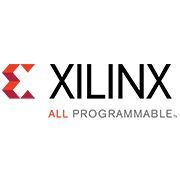
Designing FPGAs Using the Vivado Design Suite 4 | Online (Vivado 2020.2)

Technically Speaking International, INC
Designing FPGAs Using the Vivado Design Suite 4 | Online (Vivado 2020.2)
Description
Course Description
This course tackles the most sophisticated aspects of the Vivado® Design Suite and Xilinx hardware. This course enables you to use the advanced capabilities of the Vivado Design Suite to achieve design closure.
Course Outline
Day 1
-
UltraFast Design Methodology Introduction {Lecture}
-
Scripting in Vivado Design Suite Non-Project Mode {Lecture, Lab}
-
Using Procedures and Lists in Tcl Scripting {Lecture}
-
Using regexp in Tcl Scripting {Lecture, Lab}
-
Introduction to the Xilinx Tcl Store {Lecture, Demo}
-
Debugging and Error Management in Tcl Scripting {Lecture}
-
I/O Timing Scenarios {Lecture}
-
Source-Synchronous I/O Timing {Lecture, Lab}
-
System-Synchronous I/O Timing {Lecture, Demo}
-
Timing Constraints Priority {Lecture}
-
Case Analysis {Lecture}
-
Daisy Chains and Gangs in Configuration {Lecture}
- � Managing Remote IP {Lecture, Lab}
- Introduction to Floorplanning {Lecture}
- Design Analysis and Floorplanning {Lecture, Lab}
- Incremental Compile Flow {Lecture, Lab}
- Re-entrant Implementation Mode {Lecture, Lab}
- Physical Optimization {Lecture, Lab}
- Vivado Design Suite ECO Flow {Lecture, Lab}
- Trigger and Debug at Device Startup {Lecture, Demo} � Scripting for a VLA Design {Lecture, Lab}
- Vivado Design Suite Debug Methodology {Lecture}
- Power Management Techniques {Lecture}
- Bitstream Security {Lecture, Lab}
Topic Descriptions
Day 1
- UltraFast Design Methodology Introduction – Introduces the UltraFastTM design methodology guidelines covered in this course.
- Scripting in Vivado Design Suite Non-Project Mode – Write Tcl commands in the non-project batch flow for a design.
- Using Procedures and Lists in Tcl Scripting – Employ procedures and lists in Tcl scripting.
- Using regexp in Tcl Scripting – Use regular expressions to find a pattern in a text file while scripting an action in the Vivado Design Suite.
- Introduction to the Xilinx Tcl Store – Introduces the Xilinx Tcl Store.
- Debugging and Error Management in Tcl Scripting - Understand how
- to debug errors in a Tcl script.
- I/O Timing Scenarios – Overview of various I/O timing scenarios, such as source- and system-synchronous, direct/MMCM capture, and edge/center aligned data.
- Source-Synchronous I/O Timing – Apply I/O delay constraints and perform static timing analysis for a source-synchronous, double data rate (DDR) interface.
- System-Synchronous I/O Timing – Apply I/O delay constraints and perform static timing analysis for a system-synchronous input interface.
- Timing Constraints Priority – Identify the priority of timing constraints. ô?±Œ Case Analysis – Understand how to analyze timing when using
- multiplexed clocks in a design.
- Daisy Chains and Gangs in Configuration – Introduces advanced configuration schemes for multiple FPGAs.
- Managing Remote IP – Store IP and related files remote to the current working project directory.
Day 2
- Introduction to Floorplanning – Introduction to floorplanning and how to use Pblocks while floorplanning.
- Design Analysis and Floorplanning – Explore the pre- and post- implementation design analysis features of the Vivado IDE.
- Incremental Compile Flow – Utilize the incremental compile flow when making last-minute RTL changes.
- Re-entrant Implementation Mode – Use re-entrant mode on partial routed nets.
- Physical Optimization – Use physical optimization techniques for timing closure.
- Vivado Design Suite ECO Flow – Use ECO flow to make changes to a previously implemented design and apply changes to the original design.

